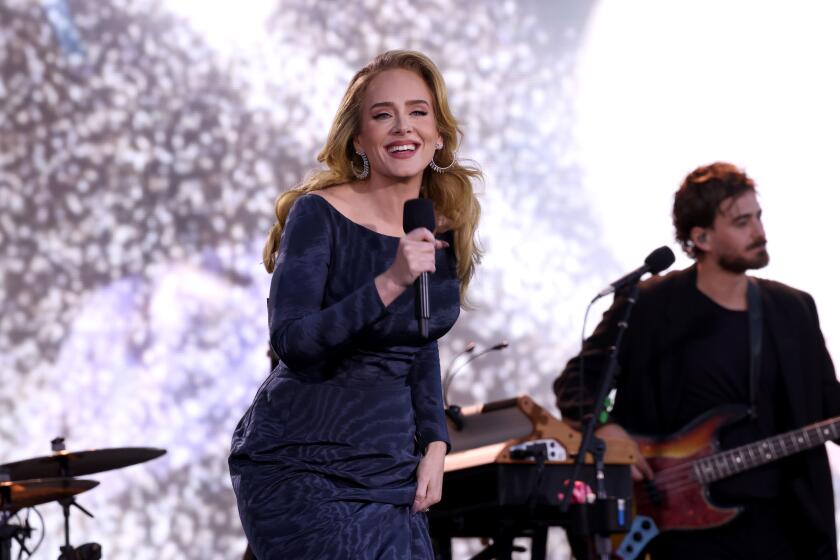JAZZ : ALBUM REVIEWS : From the Archives: New Work by Four Giants
- Share via
The record business loves categories. It makes marketing so much easier when every release has its own spot in the record stores and a pigeonhole to fit in the best-selling album charts.
But problems arise when records come along that don’t quite fit into specific categories, that won’t squeeze comfortably into the pigeonholes. What, for example, is to be done with newly released albums of material produced years--even decades--ago by artists who are no longer with a major label or who may no longer be alive? Especially when the music is a significant addition to an artist’s overall catalog? Duke Ellington’s “Live at the Whitney,” discussed here recently, is a case in point. Released with a group of Impulse reissues, an impressive, previously unheard Ellington trio performance might easily have been passed over as another CD updating of already available music.
Three other just-released collections pose a similar dilemma. Portions of “Live at the Berlin Philharmonic” by the Dave Brubeck Trio & Gerry Mulligan have been available in other formats, but the set has never been released before in its entirety. And John Coltrane’s “Stellar Regions” and Stan Getz’s “Blue Skies” have never been commercially issued at all.
Will they fit into the record business categorization process? Will they receive the promotional attention they deserve? There’s little evidence thus far that this will take place. Which is a shame, since each album represents an important addition to the performers’ life work.
JOHN COLTRANE
“Stellar Regions”
Impulse
* * * *
Recorded in February 1967, five months before his death of liver cancer at the age of 40, the eight tracks (and three alternate takes) included here reveal a Coltrane who was still probing the outer limits of his creativity. The saxophonist’s soloing on some of the pieces--”Offering” and “Iris” (the latter titled by his wife, Alice Coltrane) are typical--is almost painfully intense, an aural vision of the improvisational compulsions of one of jazz music’s most gifted artists.
Although he is backed by his wife on piano, bassist Jimmy Garrison and drummer Rashied Ali in a series of works that provide little more than springboards for soloing, Coltrane’s playing has an eerily solitary quality. Strip away the accompaniment, and many of these solos--dominated by a kind of intimations-of-mortality de-constructionism--stand alone. They suggest that, in a curious way, Coltrane, near the end, may have been achieving a self- sufficient artistic solitude as basic and pure as the late-life line drawings of Picasso.
STAN GETZ
“Blue Skies”
Concord
* * * *
The Getz register of recordings is extensive and profuse with a variety of settings. A star before he turned 20, the tenor saxophonist had been a prominent jazz figure for 35 years when he made this studio session in 1982. And, although he was best known to the wider public for his bossa nova work, he was also a brilliant, Lester Young-styled, bebop-based soloist and an accomplished big-band player, blessed with an instantly recognizable sound.
He was at his best, however, in small groups of this sort--with Jim McNeely, piano, Marc Johnson, bass, and Billy Hart, drums--in which he could stretch out and allow his rich, melodically oriented imagination to flow. Examples: his luxurious ballad renderings of “Spring Is Here” and “Blue Skies.” There were times, later in the ‘80s, when Getz’s airy upper register tended to become pinched and whiny. Not so here, in a set of warm, subtle performances that compare favorably with his finest work.
DAVE BRUBECK TRIO & GERRY MULLIGAN
“Live at the Berlin Philharmonic”
Columbia/Legacy
* * * 1/2
Five tracks from this 1970 concert, Brubeck’s last work for Columbia, were released on vinyl in the early ‘70s; 11 appeared on a double album released in Europe. But the entire concert, in which Brubeck and Mulligan perform with bassist Jack Six and drummer Alan Dawson, has never been available.
Brubeck’s longtime partner, saxophonist Paul Desmond, had left the group for a solo career in 1967 and, for the next six years, Mulligan toured with the Brubeck trio. “We never formalized our relationship into a quartet,” says Brubeck, “however we were a unified group for about six years, and this recording testifies to that fact.”
It was an interesting alliance, an agreeable connection in some ways, less compatible in others. Both were (and are) talented composers, whose solos were usually executed with unusual structure and clarity. Mulligan was also a hard-swinger, investing every note with a tremendous rhythmic surge, while Brubeck often sounded stiff, a less open and mobile player than he would become in the next two decades.
Even so, there’s no denying the energy that was in the room and on the stage for this Brubeck/Mulligan encounter. Mulligan’s solos are irresistible melodic gems, and Brubeck is all over the place--jumping into stride style, whacking out massive Cecil Taylor-like clusters, occasionally falling into rhythmic awkwardness, then suddenly compensating with wild, driving bursts of arpeggios.
The last four tracks are actually encores, demanded--with good reason--by an enraptured crowd refusing to permit an exhilarating evening of music to come to an end.
Albums are rated on a scale of one star (poor), two stars (fair), three stars (good, recommended), four stars (excellent).
More to Read
The biggest entertainment stories
Get our big stories about Hollywood, film, television, music, arts, culture and more right in your inbox as soon as they publish.
You may occasionally receive promotional content from the Los Angeles Times.










